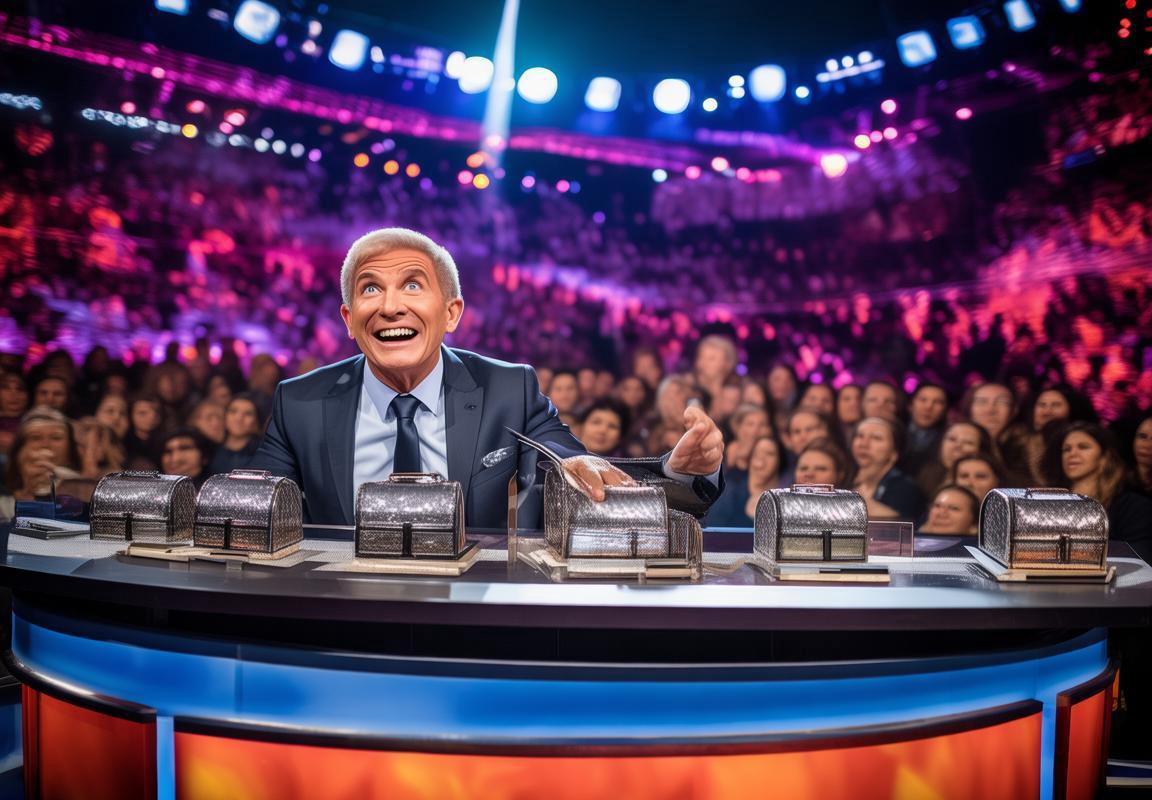Report this app
Description
The allure of “Deal or No Deal” lies in its blend of suspense and strategy, captivating viewers with its unique format and psychological intrigue.
The Thrill of Deal or No Deal: A Game Show Breakdown
- “The adrenaline rush of Deal or No Deal is undeniable, as contestants face a high-stakes choice: accept a cash offer or play for bigger prizes.”
- “The show begins with contestants choosing one of 26 mystery boxes, each containing varying amounts of money or no money at all.”
- “As the game progresses, players reveal empty boxes, increasing the potential prize in their chosen box. The excitement builds with each empty reveal.”
- “The key to winning is deciding whether the mystery box’s contents are worth more than the highest cash offer made by the bank’s representative.”
- “The psychological tactics employed by both the contestants and the bank’s negotiator add layers of strategy and suspense.”
- “Each round eliminates boxes, and the stakes rise as the possibility of a massive payout looms.”
- “The drama peaks when contestants must choose between a guaranteed sum or going all-in for the grand prize.”
- “The final moments of the game are a rollercoaster of emotions, as the contestant’s decision can lead to instant wealth or nothing at all.”
- “The unpredictability of Deal or No Deal keeps viewers on the edge of their seats, as the game’s unique format offers a mix of chance and choice.”
- “The allure of Deal or No Deal lies in its simple yet compelling premise, where the choice between security and the unknown creates a thrilling viewing experience.”

How Does Deal or No Deal Work? A Closer Look
- “Deal or No Deal begins with contestants selecting a briefcase from 26 others, each potentially holding a cash prize or a blank briefcase.”
- Inside each briefcase is a unique number. Contestants must avoid the briefcase with the highest prize to win the cash in their chosen case.
- The show’s host, often Howie Mandel, presents escalating offers from a panel of “bankers” who want to buy out the contestant’s chosen briefcase.
- If the contestant accepts, they leave with the offered amount; if not, they reveal the contents of the briefcases and keep their own.
- The suspense builds as each banker offers a deal, with the prize increasing with each pass, but the risk of a losing briefcase remains.
- The game continues until one briefcase remains, with the contestant deciding to keep it or accept the final offer.
- The show’s unpredictability keeps viewers on the edge of their seats, as the outcome hinges on a single choice.
- Despite the high stakes, the game encourages players to trust their instincts and make a bold decision.
- The variety of briefcases and the potential for life-changing sums add to the allure of Deal or No Deal.
- The game’s format has been adapted for various international versions, each with its own unique twists.

The Psychology Behind the Game: Why People Love Deal or No Deal
- Deal or No Deal thrives on suspense, where contestants choose one of 26 briefcases, each with a mystery amount.
- The host reveals the contents of 24 other cases, offering cash prizes or escalating to higher sums.
- If a contestant’s case has the highest amount, they win; if not, they choose to keep or reject the offer.
- The psychological allure lies in the anticipation of potentially hitting a life-changing jackpot.
- The game taps into the thrill of risk, as players weigh the unknown against the known.
- The element of surprise keeps viewers on the edge of their seats, as each reveal could lead to a dramatic twist.
- The fear of missing out (FOMO) drives viewers to root for the contestants, hoping for a big win.
- The game also reflects our human tendency to overestimate the value of things we don’t own.
- The psychological drama of seeing contestants face tough decisions adds to the show’s appeal.
- The combination of luck, strategy, and emotional stakes keeps the game captivating and relatable.













